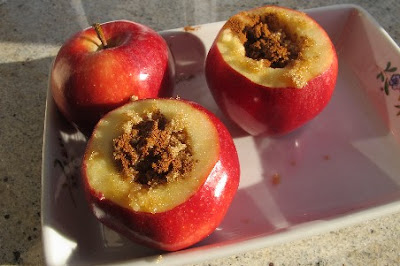How healthy are apples?
Have you heard of the old wives’ tale, “an apple a day will keep the doctor away”? Fall is apple season and a great time to visit an apple orchard for some fresh apples. Growing up I often heard that apples did not provide much nutrition. But now researchers know that apples provide some good nutrition including adding some antioxidants and fiber to one’s diet.
Does an apple a day keep the doctor away?
Apples do have many nutritional benefits. Apples are low in calories, have no fat, and do provide fiber which many American diets are low in. Unlike many American snack foods, apples have no sodium but do provide potassium which helps prevent high blood pressure. The American Heart Association notes, “Foods that are rich in potassium are important in managing high blood pressure (HBP or hypertension) because potassium lessens the effects of sodium.” Apples are a great grab and go snack and may help satisfy one’s sweet tooth. “Research on apples points to their benefits for heart health, diabetes, cancer, gut health, weight loss and inflammation.” Dietitian, Sarah Schlicter, says, “Apples are high in antioxidants, fiber, vitamin C and low in calories.” Well, not really “high in C” but they do provide some vitamin C. The Nutrition Journal notes, “Apples are a widely consumed, rich source of phytochemicals, and epidemiological studies have linked the consumption of apples with reduced risk of some cancers, cardiovascular [heart] disease, asthma and diabetes.”
A medium apple provides:
- Calories - 95
- Carbs – 25 grams
- Fiber- 4 grams
- Vitamin C – 8 milligrams
- Potassium – 214 milligrams
- Antioxidants – apples provide a variety of antioxidants
How to add some apples to your day. Besides eating a fresh apple, here are some other ways to add some apples to your day:
- Baked whole – so easy to do in a microwave. A great dessert that also adds some nutrition to your day.
- Chopped in salads
- Smoothies
Where is the fiber?
About half the fiber (4 grams) in an apple is in the skin. Don’t like the skin? You will still get 2 grams of fiber. One of my relatives will only eat peeled apples. Fine. The important thing is to eat apples and enjoy fruit.
Enjoy different varieties of apples.
Growing up many of us ate the Red Delicious apple. Now one of the most popular apples is the Honeycrisp from the University of Minnesota. Believe it or not but it took researchers 30 years to develop this crisp and sweet apple. Other popular apple varieties include the Gala, Red Delicious, Fuji and the Granny Smith apple. On a recent visit to Minnesota, we learned about a new apple variety being developed called the “First Kiss.”
On a visit to an apple orchard, I was delighted to see the great variety of apples they had for sale. Some are eating apples and many were cooking apples. Some good cooking apples include Gala, Cortland, Empire, Fuji, Golden Delicious, Granny Smith, Jona Gold, and Honeycrisp.
Enjoy apples from an apple orchard.
Fall is a great time to purchase apples. The US Apple Association indicates about 255 million bushels of apples will be produced for the 2022/2023 crop season. Apples from an orchard taste different than apples from a supermarket as those apples may have been harvested weeks or even months before.
What is the difference between apple juice and apple cider?
Apple cider is apple juice but it has not been “filtered to remove all the apple pulp”. Consequently, apple cider would be somewhat healthier than apple juice as the cider contains more of the antioxidants than the clear, filtered, apple juice. “Fresh cider from cider apples may contain from two to four times the amount of these healthful compounds compared to clear commercial apple juice because of the apple varieties and the extra processing to make clear juice.” But eating a whole apple will provide you with even more antioxidants and fiber. Dietitian Karen Collins notes that apple cider from a cider mill or a farmer’s stand may not be pasteurized. This would be fine for most people but those with compromised immune systems may want to purchase pasteurized apple cider.
This fall, take some time to visit an apple orchard and enjoy freshly harvested apples. Or, try some different apple varieties from your local store. I cannot wait to try the new First Kiss variety when it hits the market as I really enjoy eating the Honeycrisp variety. Want a simple but tasty dessert? Try the microwave baked apple recipe. Top with some vanilla ice cream for a great tasting dessert.
Microwave Baked Apple
- 2 large baking apples
- 2 teaspoons butter or margarine
- 4 teaspoons brown sugar
- ¼ teaspoon cinnamon
- 2 teaspoons golden raisins (or try dates)
- 2 Tablespoons water
Directions:
Core apples and make a slit in skin all around the middle of each apple to prevent skin from bursting. Place apples in small, microproof baking dish. In small bowl melt butter on high for 10 seconds. Stir in brown sugar, cinnamon, and raisins. Fill each apple with sugar mixture. Add water to dish. Cook in microwave, covered with plastic wrap, on high for 4-5 minutes. Makes 2 servings. (Hint: served with a scoop of vanilla ice cream.)
Sources: Association , Research , Dietitian , Nutrition Journal, Honeycrisp , cooking apples , US Apple Association , orchard , orchard , Dietitian , Baked Apple Image Sources: Apples , First Kiss , Microwave baked apples

.jpg)




Comments
Post a Comment